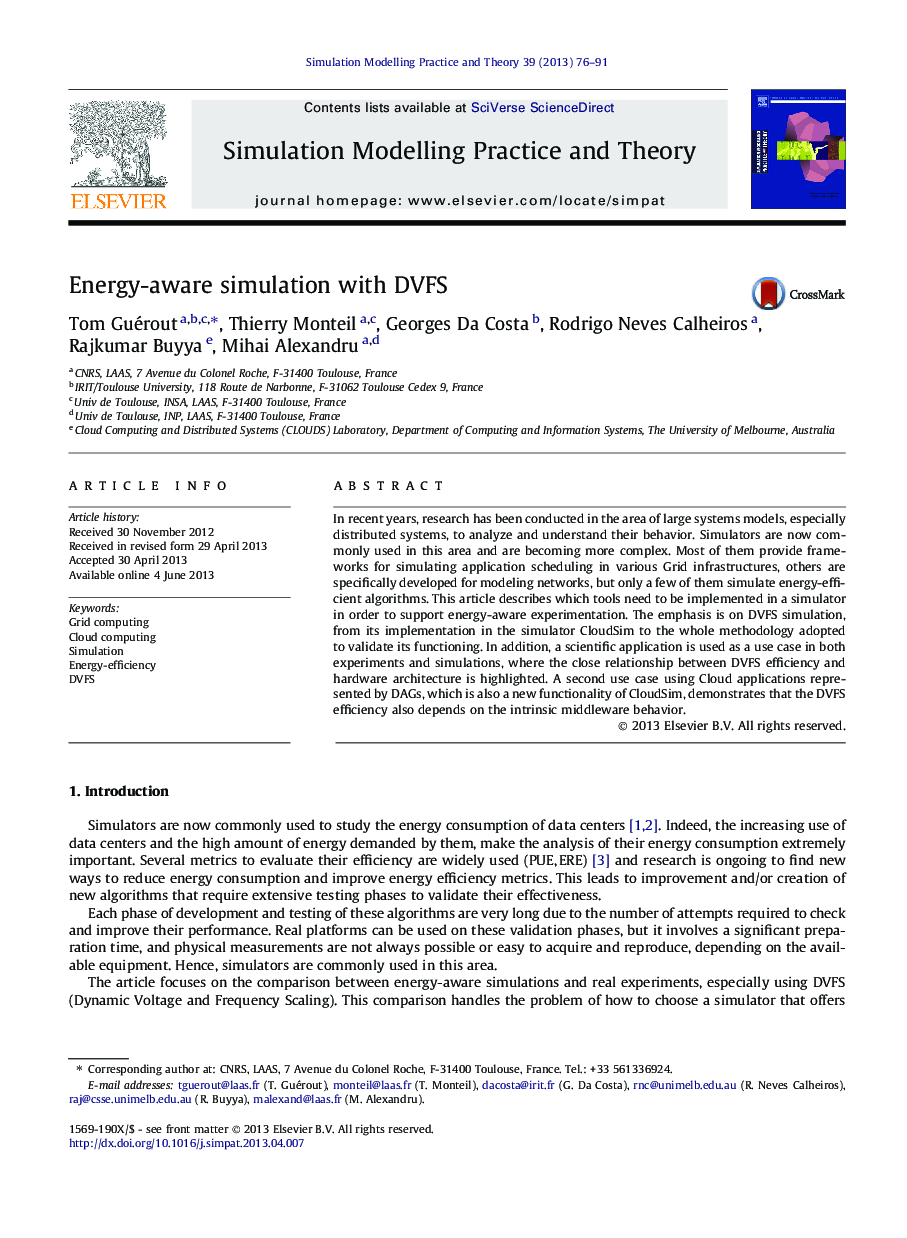| Article ID | Journal | Published Year | Pages | File Type |
|---|---|---|---|---|
| 491947 | Simulation Modelling Practice and Theory | 2013 | 16 Pages |
In recent years, research has been conducted in the area of large systems models, especially distributed systems, to analyze and understand their behavior. Simulators are now commonly used in this area and are becoming more complex. Most of them provide frameworks for simulating application scheduling in various Grid infrastructures, others are specifically developed for modeling networks, but only a few of them simulate energy-efficient algorithms. This article describes which tools need to be implemented in a simulator in order to support energy-aware experimentation. The emphasis is on DVFS simulation, from its implementation in the simulator CloudSim to the whole methodology adopted to validate its functioning. In addition, a scientific application is used as a use case in both experiments and simulations, where the close relationship between DVFS efficiency and hardware architecture is highlighted. A second use case using Cloud applications represented by DAGs, which is also a new functionality of CloudSim, demonstrates that the DVFS efficiency also depends on the intrinsic middleware behavior.
